
- •CONTENTS
- •1.1 Introduction
- •1.2 What Is a Computer?
- •1.3 Programs
- •1.4 Operating Systems
- •1.5 Java, World Wide Web, and Beyond
- •1.6 The Java Language Specification, API, JDK, and IDE
- •1.7 A Simple Java Program
- •1.8 Creating, Compiling, and Executing a Java Program
- •1.9 (GUI) Displaying Text in a Message Dialog Box
- •2.1 Introduction
- •2.2 Writing Simple Programs
- •2.3 Reading Input from the Console
- •2.4 Identifiers
- •2.5 Variables
- •2.7 Named Constants
- •2.8 Numeric Data Types and Operations
- •2.9 Problem: Displaying the Current Time
- •2.10 Shorthand Operators
- •2.11 Numeric Type Conversions
- •2.12 Problem: Computing Loan Payments
- •2.13 Character Data Type and Operations
- •2.14 Problem: Counting Monetary Units
- •2.15 The String Type
- •2.16 Programming Style and Documentation
- •2.17 Programming Errors
- •2.18 (GUI) Getting Input from Input Dialogs
- •3.1 Introduction
- •3.2 boolean Data Type
- •3.3 Problem: A Simple Math Learning Tool
- •3.4 if Statements
- •3.5 Problem: Guessing Birthdays
- •3.6 Two-Way if Statements
- •3.7 Nested if Statements
- •3.8 Common Errors in Selection Statements
- •3.9 Problem: An Improved Math Learning Tool
- •3.10 Problem: Computing Body Mass Index
- •3.11 Problem: Computing Taxes
- •3.12 Logical Operators
- •3.13 Problem: Determining Leap Year
- •3.14 Problem: Lottery
- •3.15 switch Statements
- •3.16 Conditional Expressions
- •3.17 Formatting Console Output
- •3.18 Operator Precedence and Associativity
- •3.19 (GUI) Confirmation Dialogs
- •4.1 Introduction
- •4.2 The while Loop
- •4.3 The do-while Loop
- •4.4 The for Loop
- •4.5 Which Loop to Use?
- •4.6 Nested Loops
- •4.7 Minimizing Numeric Errors
- •4.8 Case Studies
- •4.9 Keywords break and continue
- •4.10 (GUI) Controlling a Loop with a Confirmation Dialog
- •5.1 Introduction
- •5.2 Defining a Method
- •5.3 Calling a Method
- •5.4 void Method Example
- •5.5 Passing Parameters by Values
- •5.6 Modularizing Code
- •5.7 Problem: Converting Decimals to Hexadecimals
- •5.8 Overloading Methods
- •5.9 The Scope of Variables
- •5.10 The Math Class
- •5.11 Case Study: Generating Random Characters
- •5.12 Method Abstraction and Stepwise Refinement
- •6.1 Introduction
- •6.2 Array Basics
- •6.3 Problem: Lotto Numbers
- •6.4 Problem: Deck of Cards
- •6.5 Copying Arrays
- •6.6 Passing Arrays to Methods
- •6.7 Returning an Array from a Method
- •6.8 Variable-Length Argument Lists
- •6.9 Searching Arrays
- •6.10 Sorting Arrays
- •6.11 The Arrays Class
- •7.1 Introduction
- •7.2 Two-Dimensional Array Basics
- •7.3 Processing Two-Dimensional Arrays
- •7.4 Passing Two-Dimensional Arrays to Methods
- •7.5 Problem: Grading a Multiple-Choice Test
- •7.6 Problem: Finding a Closest Pair
- •7.7 Problem: Sudoku
- •7.8 Multidimensional Arrays
- •8.1 Introduction
- •8.2 Defining Classes for Objects
- •8.3 Example: Defining Classes and Creating Objects
- •8.4 Constructing Objects Using Constructors
- •8.5 Accessing Objects via Reference Variables
- •8.6 Using Classes from the Java Library
- •8.7 Static Variables, Constants, and Methods
- •8.8 Visibility Modifiers
- •8.9 Data Field Encapsulation
- •8.10 Passing Objects to Methods
- •8.11 Array of Objects
- •9.1 Introduction
- •9.2 The String Class
- •9.3 The Character Class
- •9.4 The StringBuilder/StringBuffer Class
- •9.5 Command-Line Arguments
- •9.6 The File Class
- •9.7 File Input and Output
- •9.8 (GUI) File Dialogs
- •10.1 Introduction
- •10.2 Immutable Objects and Classes
- •10.3 The Scope of Variables
- •10.4 The this Reference
- •10.5 Class Abstraction and Encapsulation
- •10.6 Object-Oriented Thinking
- •10.7 Object Composition
- •10.8 Designing the Course Class
- •10.9 Designing a Class for Stacks
- •10.10 Designing the GuessDate Class
- •10.11 Class Design Guidelines
- •11.1 Introduction
- •11.2 Superclasses and Subclasses
- •11.3 Using the super Keyword
- •11.4 Overriding Methods
- •11.5 Overriding vs. Overloading
- •11.6 The Object Class and Its toString() Method
- •11.7 Polymorphism
- •11.8 Dynamic Binding
- •11.9 Casting Objects and the instanceof Operator
- •11.11 The ArrayList Class
- •11.12 A Custom Stack Class
- •11.13 The protected Data and Methods
- •11.14 Preventing Extending and Overriding
- •12.1 Introduction
- •12.2 Swing vs. AWT
- •12.3 The Java GUI API
- •12.4 Frames
- •12.5 Layout Managers
- •12.6 Using Panels as Subcontainers
- •12.7 The Color Class
- •12.8 The Font Class
- •12.9 Common Features of Swing GUI Components
- •12.10 Image Icons
- •13.1 Introduction
- •13.2 Exception-Handling Overview
- •13.3 Exception-Handling Advantages
- •13.4 Exception Types
- •13.5 More on Exception Handling
- •13.6 The finally Clause
- •13.7 When to Use Exceptions
- •13.8 Rethrowing Exceptions
- •13.9 Chained Exceptions
- •13.10 Creating Custom Exception Classes
- •14.1 Introduction
- •14.2 Abstract Classes
- •14.3 Example: Calendar and GregorianCalendar
- •14.4 Interfaces
- •14.5 Example: The Comparable Interface
- •14.6 Example: The ActionListener Interface
- •14.7 Example: The Cloneable Interface
- •14.8 Interfaces vs. Abstract Classes
- •14.9 Processing Primitive Data Type Values as Objects
- •14.10 Sorting an Array of Objects
- •14.11 Automatic Conversion between Primitive Types and Wrapper Class Types
- •14.12 The BigInteger and BigDecimal Classes
- •14.13 Case Study: The Rational Class
- •15.1 Introduction
- •15.2 Graphical Coordinate Systems
- •15.3 The Graphics Class
- •15.4 Drawing Strings, Lines, Rectangles, and Ovals
- •15.5 Case Study: The FigurePanel Class
- •15.6 Drawing Arcs
- •15.7 Drawing Polygons and Polylines
- •15.8 Centering a String Using the FontMetrics Class
- •15.9 Case Study: The MessagePanel Class
- •15.10 Case Study: The StillClock Class
- •15.11 Displaying Images
- •15.12 Case Study: The ImageViewer Class
- •16.1 Introduction
- •16.2 Event and Event Source
- •16.3 Listeners, Registrations, and Handling Events
- •16.4 Inner Classes
- •16.5 Anonymous Class Listeners
- •16.6 Alternative Ways of Defining Listener Classes
- •16.7 Problem: Loan Calculator
- •16.8 Window Events
- •16.9 Listener Interface Adapters
- •16.10 Mouse Events
- •16.11 Key Events
- •16.12 Animation Using the Timer Class
- •17.1 Introduction
- •17.2 Buttons
- •17.3 Check Boxes
- •17.4 Radio Buttons
- •17.5 Labels
- •17.6 Text Fields
- •17.7 Text Areas
- •17.8 Combo Boxes
- •17.9 Lists
- •17.10 Scroll Bars
- •17.11 Sliders
- •17.12 Creating Multiple Windows
- •18.1 Introduction
- •18.2 Developing Applets
- •18.3 The HTML File and the <applet> Tag
- •18.4 Applet Security Restrictions
- •18.5 Enabling Applets to Run as Applications
- •18.6 Applet Life-Cycle Methods
- •18.7 Passing Strings to Applets
- •18.8 Case Study: Bouncing Ball
- •18.9 Case Study: TicTacToe
- •18.10 Locating Resources Using the URL Class
- •18.11 Playing Audio in Any Java Program
- •18.12 Case Study: Multimedia Animations
- •19.1 Introduction
- •19.2 How is I/O Handled in Java?
- •19.3 Text I/O vs. Binary I/O
- •19.4 Binary I/O Classes
- •19.5 Problem: Copying Files
- •19.6 Object I/O
- •19.7 Random-Access Files
- •20.1 Introduction
- •20.2 Problem: Computing Factorials
- •20.3 Problem: Computing Fibonacci Numbers
- •20.4 Problem Solving Using Recursion
- •20.5 Recursive Helper Methods
- •20.6 Problem: Finding the Directory Size
- •20.7 Problem: Towers of Hanoi
- •20.8 Problem: Fractals
- •20.9 Problem: Eight Queens
- •20.10 Recursion vs. Iteration
- •20.11 Tail Recursion
- •APPENDIXES
- •INDEX
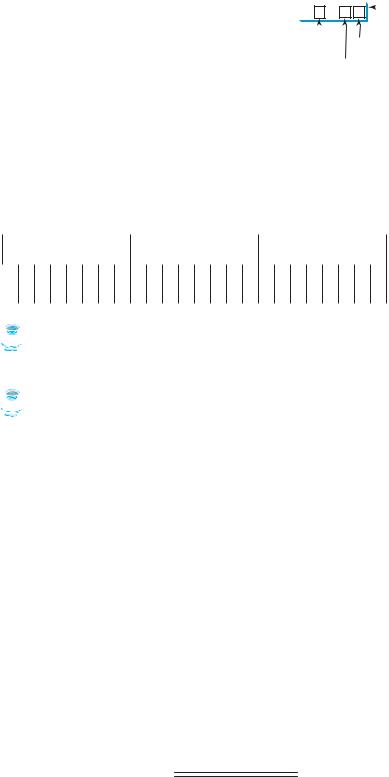
3.18 Operator Precedence and Associativity 97
The code presented in the beginning of this section for displaying only two digits after the decimal point in a floating-point value can be revised using the printf method as follows:
double x = 2.0 / 3; |
|
|
|
|
|
|
|
||
System.out.printf("x is %4.2f", x); |
|
% 4 . |
2 f |
|
|
format specifier |
|||
|
|
|
|||||||
|
|
|
|
||||||
display |
x is 0.67 |
|
|
|
|
|
|
|
|
|
|
|
|
|
|
|
|||
field width |
conversion code |
||||||||
|
|
||||||||
precision
By default, the output is right justified. You can put the minus sign (-) in the specifier to left justify specify that the item is left justified in the output within the specified field. For example, the
following statements
System.out.printf("%8d%8s%8.1f\n", 1234, "Java", 5.6);
System.out.printf("%-8d%-8s%-8.1f \n", 1234, "Java", 5.6);
display
8 characters |
8 characters |
8 characters |
|
|
|
1 2 3 4 |
J a v a |
5 . 6 |
1 2 3 4 |
J a v a |
5 . 6 |
 Caution
Caution
The items must match the specifiers in exact type. The item for the specifier %f or %e must be a floating-point type value such as 40.0, not 40. Thus an int variable cannot match %f or %e.
 Tip
Tip
The % sign denotes a specifier. To output a literal % in the format string, use %%.
3.18 Operator Precedence and Associativity
Operator precedence and associativity determine the order in which operators are evaluated. Suppose that you have this expression:
3 + 4 * 4 > 5 * (4 + 3) – 1 |
|
What is its value? What is the execution order of the operators? |
|
Arithmetically, the expression in the parentheses is evaluated first. (Parentheses can be |
|
nested, in which case the expression in the inner parentheses is executed first.) When evaluat- |
|
ing an expression without parentheses, the operators are applied according to the precedence |
|
rule and the associativity rule. |
|
The precedence rule defines precedence for operators, as shown in Table 3.10, which contains |
precedence |
the operators you have learned so far. Operators are listed in decreasing order of precedence from |
|
top to bottom. Operators with the same precedence appear in the same group. (See Appendix C, |
|
“Operator Precedence Chart,” for a complete list of Java operators and their precedence.) |
|
If operators with the same precedence are next to each other, their associativity determines |
associativity |
the order of evaluation. All binary operators except assignment operators are left associative. |
|
For example, since + and – are of the same precedence and are left associative, the expression |
|
a - b + c - d |
equivalent |
((a - b) + c) - d |
|
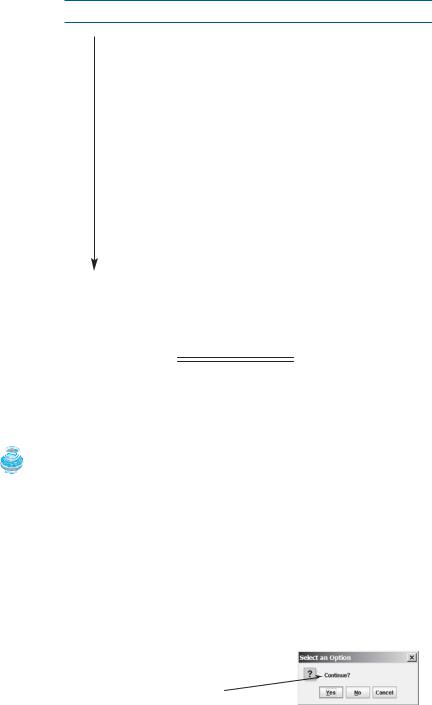
98 Chapter 3 Selections
TABLE 3.10 Operator Precedence Chart
Precedence Operator
var++ and var-- (Postfix)
+, - (Unary plus and minus), ++var and --var (Prefix) (type) (Casting)
! (Not)
*, /, % (Multiplication, division, and remainder)
+, - (Binary addition and subtraction)
<, <=, >, >= (Comparison)
==, != (Equality)
^ (Exclusive OR)
&& (AND)
|| (OR)
=, +=, – =, *=, /=, %= (Assignment operator)
Assignment operators are right associative. Therefore, the expression
a = b += c = 5 |
equivalent |
a = (b += (c = 5)) |
|
Suppose a, b, and c are 1 before the assignment; after the whole expression is evaluated, a becomes 6, b becomes 6, and c becomes 5. Note that left associativity for the assignment operator would not make sense.
|
Note |
|
Java has its own way to evaluate an expression internally. The result of a Java evaluation is the |
|
same as that of its corresponding arithmetic evaluation. Interested readers may refer to Supple- |
behind the scenes |
ment III.B for more discussions on how an expression is evaluated in Java behind the scenes. |
3.19 (GUI) Confirmation Dialogs
You have used showMessageDialog to display a message dialog box and showInputDialog to display an input dialog box. Occasionally it is useful to answer a question with a confirmation dialog box. A confirmation dialog can be created using the following statement:
int option = JOptionPane.showConfirmDialog
(null, "Continue");
When a button is clicked, the method returns an option value. The value is
JOptionPane.YES_OPTION (0) for the Yes button, JOptionPane.NO_OPTION (1) for the No button, and JOptionPane.CANCEL_OPTION (2) for the Cancel button.
You may rewrite the guess-birthday program in Listing 3.3 using confirmation dialog boxes, as shown in Listing 3.10. Figure 3.6 shows a sample run of the program for the day 19.
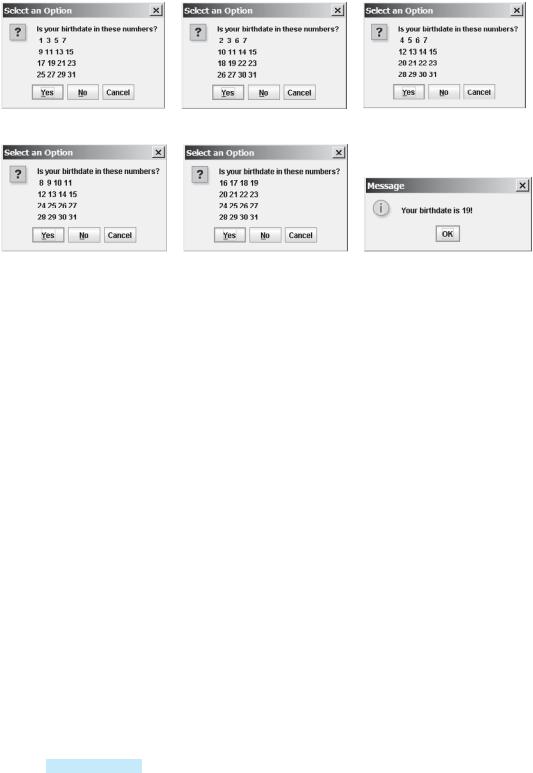
3.19 (GUI) Confirmation Dialogs 99
(a) |
(b) |
(c) |
(d) |
(e) |
(f) |
FIGURE 3.6 Click Yes in (a), Yes in (b), No in (c), No in (d), and Yes in (e).
LISTING 3.10 GuessBirthdayUsingConfirmationDialog.java
1 |
import javax.swing.JOptionPane; |
import class |
2 |
|
|
3 |
public class GuessBirthdayUsingConfirmationDialog { |
|
4public static void main(String[] args) {
5 |
String |
set1 |
= |
|
set1 |
|
6 |
" 1 |
3 |
5 |
7\n" + |
|
|
7 |
" 9 11 |
13 |
15\n" + |
|
||
8 |
"17 19 |
21 |
23\n" + |
|
||
9 |
"25 27 29 |
31"; |
|
|||
10 |
|
|
|
|
|
|
11 |
String |
set2 = |
|
set2 |
||
12 |
" 2 |
3 |
6 |
7\n" + |
|
|
13"10 11 14 15\n" +
14"18 19 22 23\n" +
15"26 27 30 31";
17 |
String |
set3 = |
|
set3 |
18 |
" 4 |
5 6 |
7\n" + |
|
19"12 13 14 15\n" +
20"20 21 22 23\n" +
21"28 29 30 31";
23 |
String set4 = |
set4 |
24" 8 9 10 11\n" +
25"12 13 14 15\n" +
26"24 25 26 27\n" +
27"28 29 30 31";
28 |
|
|
29 |
String set5 = |
set5 |
30"16 17 18 19\n" +
31"20 21 22 23\n" +
32"24 25 26 27\n" +
33"28 29 30 31";
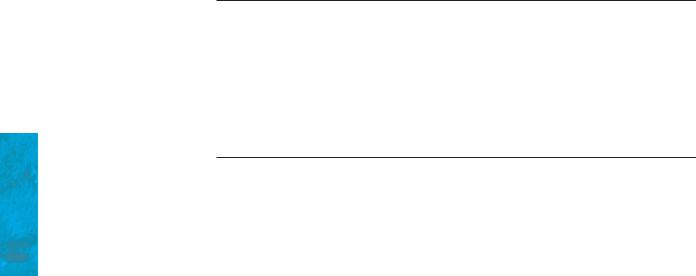
100 Chapter 3 |
Selections |
||||||
|
35 |
|
int day = 0; |
||||
|
36 |
|
|
|
|
|
|
|
37 |
|
// Prompt the user to answer questions |
||||
confirmation dialog |
38 |
|
int answer = JOptionPane.showConfirmDialog(null, |
|
|||
|
39 |
|
|
"Is your birthday in these numbers?\n" + set1); |
|
||
|
40 |
|
|
|
|
|
|
in set1? |
41 |
|
if (answer == JOptionPane.YES_OPTION) |
|
|
|
|
|
42 |
|
|
day += 1; |
|||
|
43 |
|
|
|
|
|
|
|
44 |
|
answer = JOptionPane.showConfirmDialog(null, |
||||
|
45 |
|
|
"Is your birthday in these numbers?\n" + set2); |
|||
|
46 |
|
|
|
|
|
|
in set2? |
47 |
|
if (answer == JOptionPane.YES_OPTION) |
||||
|
48 |
|
|
day += 2; |
|||
|
49 |
|
|
|
|
|
|
|
50 |
|
answer = JOptionPane.showConfirmDialog(null, |
||||
|
51 |
|
|
"Is your birthday in these numbers?\n" + set3); |
|||
|
52 |
|
|
|
|
|
|
in set3? |
53 |
|
if (answer == JOptionPane.YES_OPTION) |
||||
|
54 |
|
|
day += 4; |
|||
|
55 |
|
|
|
|
|
|
|
56 |
|
answer = JOptionPane.showConfirmDialog(null, |
||||
|
57 |
|
|
"Is your birthday in these numbers?\n" + set4); |
|||
|
58 |
|
|
|
|
|
|
in set4? |
59 |
|
if (answer == JOptionPane.YES_OPTION) |
||||
|
60 |
|
|
day += 8; |
|||
|
61 |
|
|
|
|
|
|
|
62 |
|
answer = JOptionPane.showConfirmDialog(null, |
||||
|
63 |
|
|
"Is your birthday in these numbers?\n" + set5); |
|||
|
64 |
|
|
|
|
|
|
in set5? |
65 |
|
if (answer == JOptionPane.YES_OPTION) |
||||
|
66 |
|
|
day += 16; |
|||
|
67 |
|
|
|
|
|
|
|
68 |
|
JOptionPane.showMessageDialog(null, "Your birthday is " + |
||||
|
69 |
|
|
day + "!"); |
|||
|
70 |
} |
|
|
|
|
|
|
71 |
} |
|
|
|
|
|
The program displays confirmation dialog boxes to prompt the user to answer whether a number is in Set1 (line 38), Set2 (line 44), Set3 (line 50), Set4 (line 56), and Set5 (line 62). If the answer is Yes, the first number in the set is added to day (lines 42, 48, 54, 60, and 66).
KEY TERMS
Boolean expression 72 Boolean value 72 boolean type 72 break statement 94 conditional operator 90
dangling-else ambiguity 82
fall-through behavior 94 operator associativity 97 operator precedence 97 selection statement 74 short-circuit evaluation 90
CHAPTER SUMMARY
1.A boolean variable stores a true or false value.
2.The relational operators (<, <=, ==, !=, >, >=) work with numbers and characters, and yield a Boolean value.
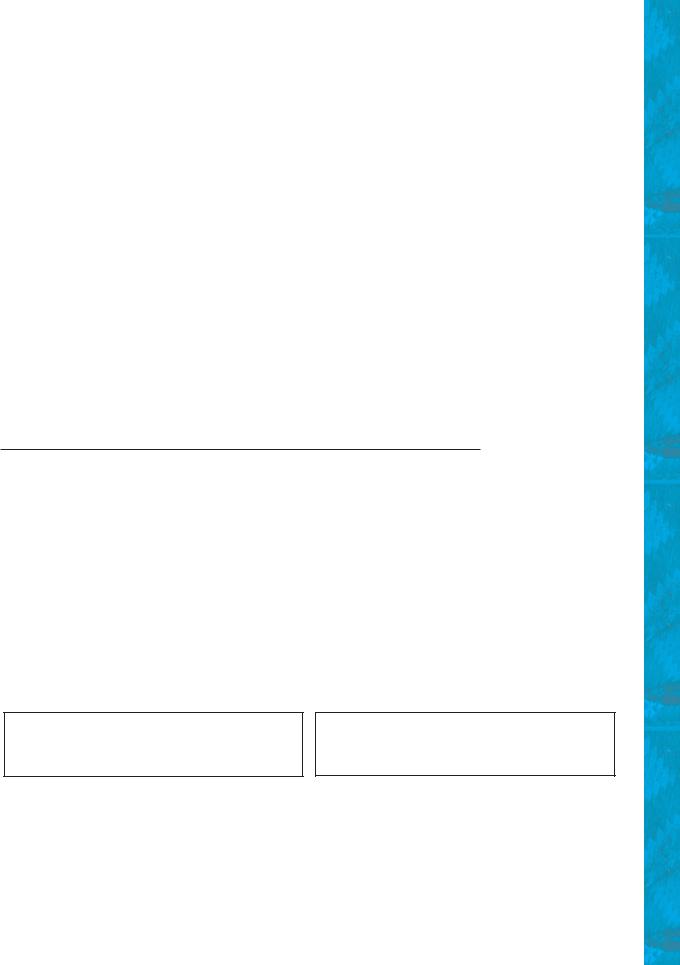
Review Questions 101
3.The Boolean operators &&, ||, !, and ^ operate with Boolean values and variables.
4.When evaluating p1 && p2, Java first evaluates p1 and then evaluates p2 if p1 is true; if p1 is false, it does not evaluate p2. When evaluating p1 ƒ ƒ p2, Java first evaluates
p1 and then evaluates p2 if p1 is false; if p1 is true, it does not evaluate p2. Therefore, && is referred to as the conditional or short-circuit AND operator, and ƒ ƒ is referred to as the conditional or short-circuit OR operator.
5.Selection statements are used for programming with alternative courses. There are several types of selection statements: if statements, if ... else statements, nested if statements, switch statements, and conditional expressions.
6.The various if statements all make control decisions based on a Boolean expression. Based on the true or false evaluation of the expression, these statements take one of two possible courses.
7.The switch statement makes control decisions based on a switch expression of type char, byte, short, or int.
8.The keyword break is optional in a switch statement, but it is normally used at the end of each case in order to terminate the remainder of the switch statement. If the break statement is not present, the next case statement will be executed.
REVIEW QUESTIONS
Section 3.2
3.1List six comparison operators.
3.2Can the following conversions involving casting be allowed? If so, find the converted result.
boolean b = true; i = (int)b;
int i = 1;
boolean b = (boolean)i;
Sections 3.3–3.11
3.3What is the printout of the code in (a) and (b) if number is 30 and 35, respectively?
if (number % 2 == 0) System.out.println(number + " is even.");
System.out.println(number + " is odd.");
if (number % 2 == 0) System.out.println(number + " is even.");
else
System.out.println(number + " is odd.");
(a) |
(b) |
3.4Suppose x = 3 and y = 2; show the output, if any, of the following code. What is the output if x = 3 and y = 4? What is the output if x = 2 and y = 2? Draw a flow chart of the code:
if (x > 2) { if (y > 2) {
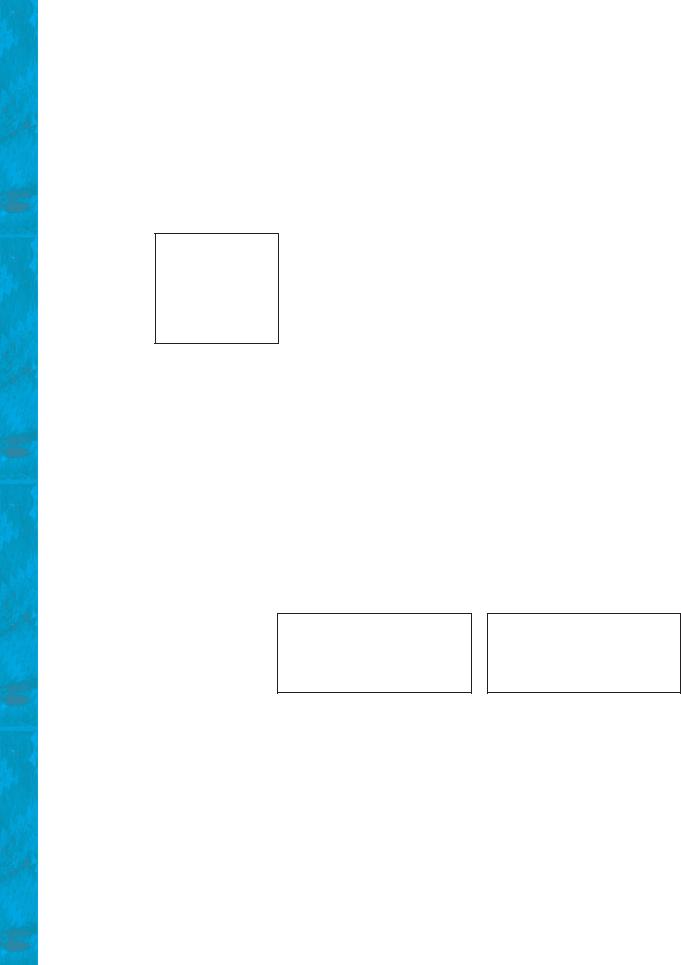
102 Chapter 3 Selections
z = x + y;
System.out.println("z is " + z);
}
}
else
System.out.println("x is " + x);
3.5Which of the following statements are equivalent? Which ones are correctly indented?
if (i > 0) if (j > 0)
x = 0; else
if (k > 0) y = 0; else z = 0;
if (i |
> |
0) { |
|
if (i > |
0) |
|
if (i |
> |
0) |
if (j |
> 0) |
|
if (j |
> 0) |
|
if (j |
> 0) |
||
x = 0; |
|
x = 0; |
|
x = 0; |
|||||
else if (k > 0) |
|
else if (k > 0) |
|
else if (k > 0) |
|||||
y = 0; |
|
y = 0; |
|
y = 0; |
|||||
} |
|
|
|
else |
|
|
else |
|
|
else |
|
|
|
z = |
0; |
|
z = |
0; |
|
z = |
0; |
|
|
|
|
|
|
|
|
|
|
|
|
|
|
|
|
|
|
(a) |
(b) |
(c) |
(d) |
3.6Suppose x = 2 and y = 3. Show the output, if any, of the following code. What is the output if x = 3 and y = 2? What is the output if x = 3 and y = 3?
(Hint: Indent the statement correctly first.)
if (x > 2)
if (y > 2) {
int z = x + y; System.out.println("z is " + z);
}
else
System.out.println("x is " + x);
3.7Are the following two statements equivalent?
if (income <= 10000) tax = income * 0.1;
else if (income <= 20000) tax = 1000 +
(income – 10000) * 0.15;
if (income <= 10000) tax = income * 0.1;
else if (income > 10000 && income <= 20000)
tax = 1000 +
(income – 10000) * 0.15;
3.8Which of the following is a possible output from invoking
Math.random()?
323.4, 0.5, 34, 1.0, 0.0, 0.234
3.9How do you generate a random integer i such that 0 … i 6 20? How do you generate a random integer i such that 10 … i 6 20? How do you generate a random integer i such that 10 … i … 50?
3.10Write an if statement that assigns 1 to x if y is greater than 0.
3.11(a) Write an if statement that increases pay by 3% if score is greater than 90. (b) Write an if statement that increases pay by 3% if score is greater than 90, otherwise increases pay by 1%.

Review Questions 103
3.12What is wrong in the following code?
if (score >= 60.0) grade = 'D';
else if (score >= 70.0) grade = 'C';
else if (score >= 80.0) grade = 'B';
else if (score >= 90.0) grade = 'A';
else
grade = 'F';
3.13Rewrite the following statement using a Boolean expression:
if (count % 10 == 0) newLine = true;
else
newLine = false;
Sections 3.12–3.14
3.14Assuming that x is 1, show the result of the following Boolean expressions.
(true) && (3 > 4) !(x > 0) && (x > 0) (x > 0) || (x < 0) (x != 0) || (x == 0) (x >= 0) || (x < 0)
(x != 1) == !(x == 1)
3.15Write a Boolean expression that evaluates to true if a number stored in variable num is between 1 and 100.
3.16Write a Boolean expression that evaluates to true if a number stored in variable num is between 1 and 100 or the number is negative.
3.17Assume that x and y are int type. Which of the following are legal Java expressions?
x > y > 0 x = y && y x /= y
x or y x and y
(x != 0) || (x = 0)
3.18Suppose that x is 1. What is x after the evaluation of the following expression?
(x >= 1) && (x++ > 1) (x > 1) && (x++ > 1)
3.19What is the value of the expression ch >= 'A' && ch <= 'Z' if ch is 'A', 'p',
'E', or '5'?
3.20Suppose, when you run the program, you enter input 2 3 6 from the console. What is the output?
public class Test {
public static void main(String[] args) {
java.util.Scanner input = new java.util.Scanner(System.in); double x = input.nextDouble();

104 Chapter 3 Selections
double y = input.nextDouble(); double z = input.nextDouble();
System.out.println("(x < y && y < z) is " + (x < y && y < z)); System.out.println("(x < y || y < z) is " + (x < y || y < z)); System.out.println("!(x < y) is " + !(x < y)); System.out.println("(x + y < z) is " + (x + y < z)); System.out.println("(x + y < z) is " + (x + y < z));
}
}
3.21Write a Boolean expression that evaluates true if age is greater than 13 and less than 18.
3.22Write a Boolean expression that evaluates true if weight is greater than 50 or height is greater than 160.
3.23Write a Boolean expression that evaluates true if weight is greater than 50 and height is greater than 160.
3.24Write a Boolean expression that evaluates true if either weight is greater than 50 or height is greater than 160, but not both.
Section 3.15
3.25What data types are required for a switch variable? If the keyword break is not used after a case is processed, what is the next statement to be executed? Can you convert a switch statement to an equivalent if statement, or vice versa? What are the advantages of using a switch statement?
3.26What is y after the following switch statement is executed?
x = 3; y = 3; switch (x + 3) {
case 6: y = 1; default: y += 1;
}
3.27Use a switch statement to rewrite the following if statement and draw the flow chart for the switch statement:
if (a == 1) x += 5;
else if (a == 2) x += 10;
else if (a == 3) x += 16;
else if (a == 4) x += 34;
3.28Write a switch statement that assigns a String variable dayName with Sunday, Monday, Tuesday, Wednesday, Thursday, Friday, Saturday, if day is 0, 1, 2, 3, 4, 5, 6, accordingly.
Section 3.16
3.29Rewrite the following if statement using the conditional operator:
if (count % 10 == 0) System.out.print(count + "\n");
else
System.out.print(count + " ");

Programming Exercises 105
3.30Rewrite the following statement using a conditional expression:
if (temperature > 90) pay = pay * 1.5;
else
pay = pay * 1.1;
Section 3.17
3.31What are the specifiers for outputting a Boolean value, a character, a decimal integer, a floating-point number, and a string?
3.32What is wrong in the following statements?
(a)System.out.printf("%5d %d", 1, 2, 3);
(b)System.out.printf("%5d %f", 1);
(c)System.out.printf("%5d %f", 1, 2);
3.33Show the output of the following statements.
(a)System.out.printf("amount is %f %e\n", 32.32, 32.32);
(b)System.out.printf("amount is %5.4f %5.4e\n", 32.32, 32.32);
(c)System.out.printf("%6b\n", (1 > 2));
(d)System.out.printf("%6s\n", "Java");
(e)System.out.printf("%-6b%s\n", (1 > 2), "Java");
(f)System.out.printf("%6b%-s\n", (1 > 2), "Java");
3.34How do you create a formatted string?
Section 3.18
3.35List the precedence order of the Boolean operators. Evaluate the following expressions:
true || true && false true && true || false
3.36True or false? All the binary operators except = are left associative.
3.37Evaluate the following expressions:
2 * 2 - 3 > 2 && 4 - 2 > 5 2 * 2 - 3 > 2 || 4 - 2 > 5
3.38Is (x > 0 && x < 10) the same as ((x > 0) && (x < 10))? Is (x > 0 || x < 10) the same as ((x > 0) || (x < 10))? Is (x > 0 || x < 10 && y < 0) the same as (x > 0 || (x < 10 && y < 0))?
Section 3.19
3.39How do you display a confirmation dialog? What value is returned when invoking
JOptionPane.showConfirmDialog?
PROGRAMMING EXERCISES
 Pedagogical Note
Pedagogical Note
For each exercise, students should carefully analyze the problem requirements and design |
|
strategies for solving the problem before coding. |
think before coding |
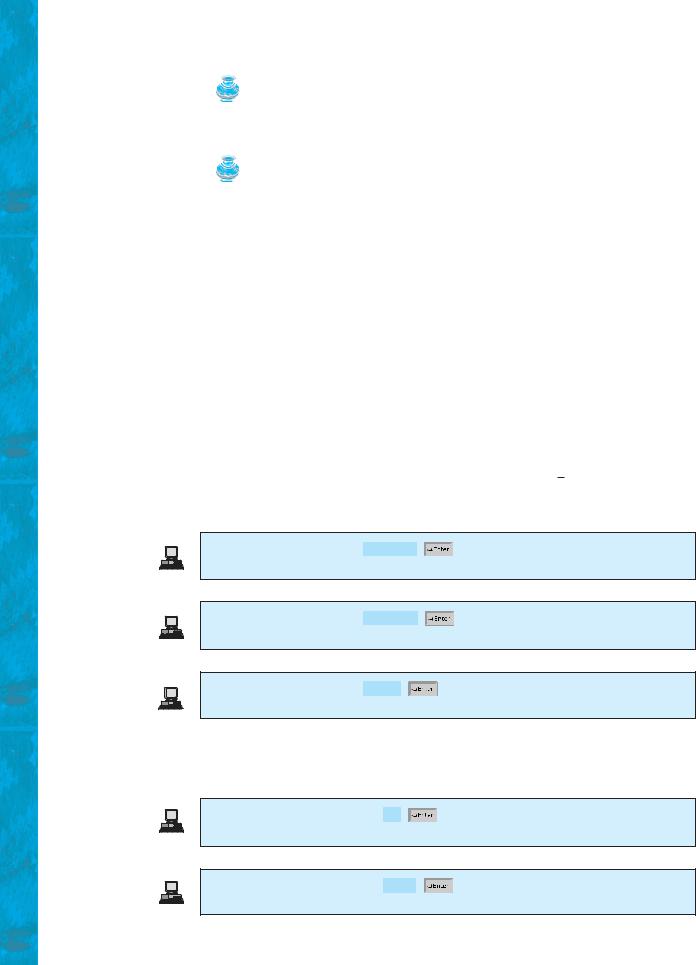
106 Chapter 3 Selections
|
Pedagogical Note |
document analysis and design |
Instructors may ask students to document analysis and design for selected exercises. Students |
|
should use their own words to analyze the problem, including the input, output, and what |
|
needs to be computed, and describe how to solve the problem in pseudocode. |
|
Debugging Tip |
|
|
|
|
|
|
|
|
Before you ask for help, read and explain the program to yourself, and trace it using several |
|||||||
|
representative inputs by hand or using an IDE debugger. You learn how to program by debug- |
|||||||
learn from mistakes |
ging your own mistakes. |
|
|
|
|
|
||
|
Section 3.2 |
|
|
|
|
|
|
|
|
3.1* (Algebra: solving quadratic equations) The two roots of a quadratic equation |
|||||||
|
ax2 + bx + c = 0 can be obtained using the following formula: |
|||||||
|
|
- b + 2 |
|
|
- b - 2 |
|
|
|
|
r1 = |
b2 - 4ac |
and r2 = |
b2 - 4ac |
||||
|
2a |
2a |
||||||
|
|
|
||||||
b2 - 4ac is called the discriminant of the quadratic equation. If it is positive, the equation has two real roots. If it is zero, the equation has one root. If it is negative, the equation has no real roots.
Write a program that prompts the user to enter values for a, b, and c and displays the result based on the discriminant. If the discriminant1 is positive, display two roots. If the discriminant is 0, display one root. Otherwise, display “The equation has no real roots”.
Note you can use Math.pow(x, 0.5) to compute x. Here are some sample runs.
Enter a, b, c: 1.0 3 1
The roots are -0.381966 and -2.61803
Enter a, b, c: 1 2.0 1
The root is -1
Enter a, b, c: 1 2 3
The equation has no real roots
3.2(Checking whether a number is even) Write a program that reads an integer and checks whether it is even. Here are the sample runs of this program:
Enter an integer: 25
Is 25 an even number? false
Enter an integer: 2000
Is 2000 an even number? true
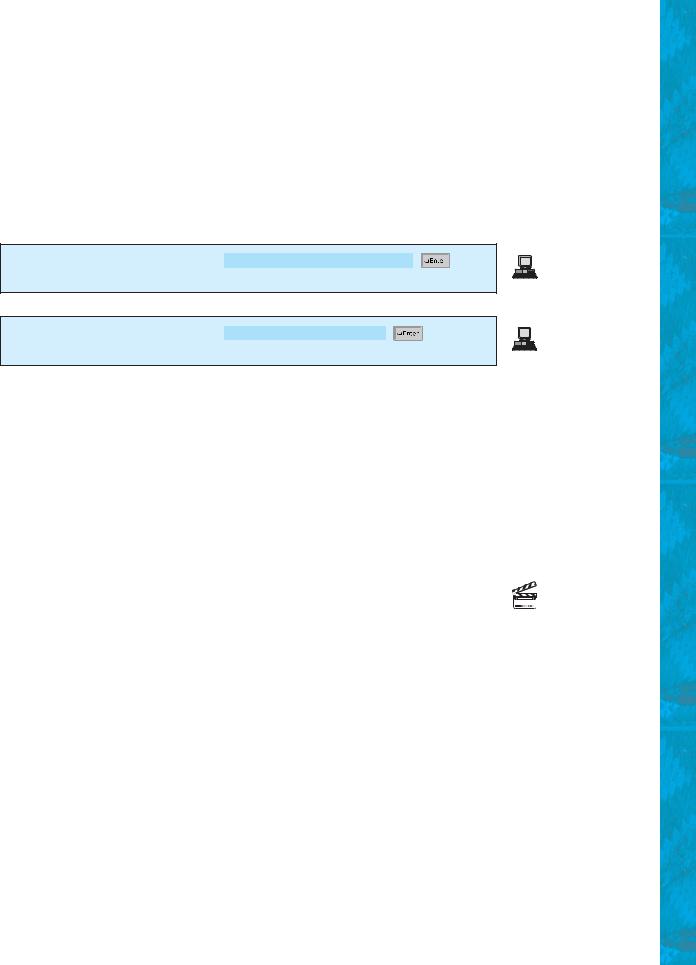
Programming Exercises 107
Sections 3.3–3.8
3.3* (Algebra: solving 2 * 2 linear equations) You can use Cramer’s rule to solve the following 2 * 2 system of linear equation:
ax + by = e |
x = |
ed - bf |
y = |
af - ec |
|
ad - bc |
ad - bc |
||||
cx + dy = f |
|
|
Write a program that prompts the user to enter a, b, c, d, e, and f and display the result. If ad - bc is 0, report that “The equation has no solution”.
Enter a, b, c, d, e, f: 9.0 4.0 3.0 -5.0 -6.0 -21.0 x is -2.0 and y is 3.0
Enter a, b, c, d, e, f: 1.0 2.0 2.0 4.0 4.0 5.0
The equation has no solution
3.4** (Game: learning addition) Write a program that generates two integers under 100 and prompts the user to enter the sum of these two integers. The program then reports true if the answer is correct, false otherwise. The program is similar to Listing 3.1.
3.5** (Game: addition for three numbers) The program in Listing 3.1 generates two integers and prompts the user to enter the sum of these two integers. Revise the program to generate three single-digit integers and prompt the user to enter the sum of these three integers.
3.6* (Health application: BMI) Revise Listing 3.5, ComputeBMI.java, to let the user enter weight, feet, and inches. For example, if a person is 5 feet and 10 inches, you will enter 5 for feet and 10 for inches.
3.7(Financial application: monetary units) Modify Listing 2.10, ComputeChange.java,
to display the nonzero denominations only, using singular words for single units such as 1 dollar and 1 penny, and plural words for more than one unit such as 2 dollars and 3 pennies. (Use input 23.67 to test your program.)
3.8* (Sorting three integers) Write a program that sorts three integers. The integers are entered from the input dialogs and stored in variables num1, num2, and num3, respectively. The program sorts the numbers so that num1 … num2 … num3.
3.9(Business: checking ISBN) An ISBN (International Standard Book Number) con-
sists of 10 digits d1d2d3d4d5d6d7d8d9d10. The last digit d10 is a checksum, which is calculated from the other nine digits using the following formula:
1d1 * 1 + d2 * 2 + d3 * 3 + d4 * 4 + d5 * 5 + d6 * 6 + d7 * 7 + d8 * 8 + d9 * 92 % 11
Video Note
Sort three integers
If the checksum is 10, the last digit is denoted X according to the ISBN convention. Write a program that prompts the user to enter the first 9 digits and displays the 10digit ISBN (including leading zeros). Your program should read the input as an integer. For example, if you enter 013601267, the program should display 0136012671.
3.10* (Game: addition quiz) Listing 3.4, SubtractionQuiz.java, randomly generates a subtraction question. Revise the program to randomly generate an addition question with two integers less than 100.
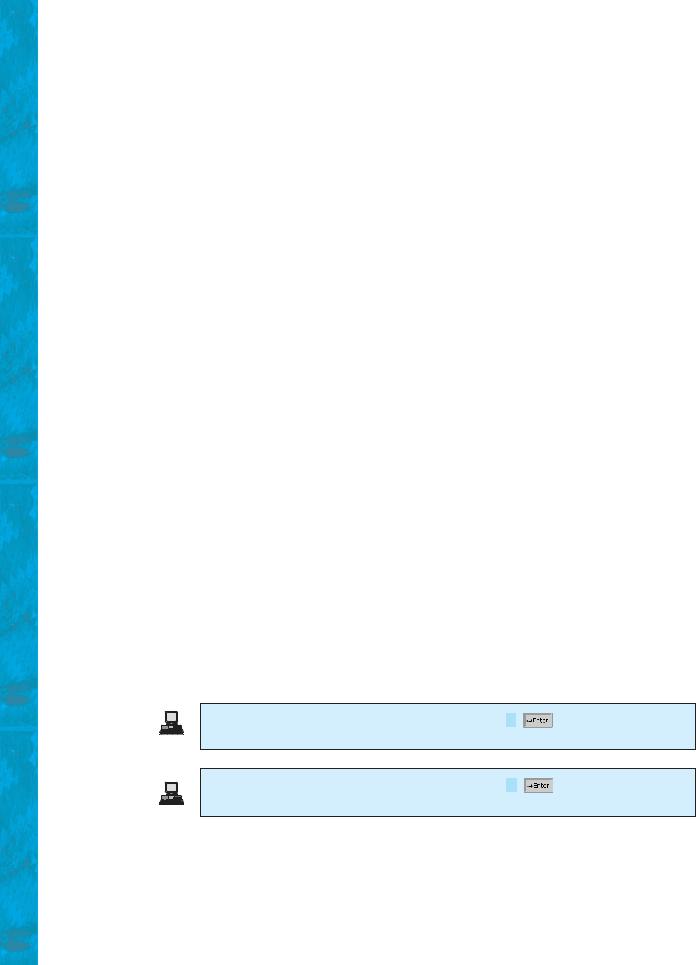
108 Chapter 3 Selections
Sections 3.9–3.19
3.11* (Finding the number of days in a month) Write a program that prompts the user to enter the month and year and displays the number of days in the month. For example, if the user entered month 2 and year 2000, the program should display that February 2000 has 29 days. If the user entered month 3 and year 2005, the program should display that March 2005 has 31 days.
3.12(Checking a number) Write a program that prompts the user to enter an integer and checks whether the number is divisible by both 5 and 6, or neither of them, or just one of them. Here are some sample runs for inputs 10, 30, and 23.
10 is divisible by 5 or 6, but not both 30 is divisible by both 5 and 6
23 is not divisible by either 5 or 6
3.13(Financial application: computing taxes) Listing 3.6, ComputeTax.java, gives the source code to compute taxes for single filers. Complete Listing 3.6 to give the complete source code.
3.14(Game: head or tail) Write a program that lets the user guess the head or tail of a coin. The program randomly generates an integer 0 or 1, which represents head or tail. The program prompts the user to enter a guess and reports whether the guess is correct or incorrect.
3.15* (Game: lottery) Revise Listing 3.9, Lottery.java, to generate a lottery of a threedigit number. The program prompts the user to enter a three-digit number and determines whether the user wins according to the following rule:
1.If the user input matches the lottery in exact order, the award is $10,000.
2.If all the digits in the user input match all the digits in the lottery, the award is $3,000.
3.If one digit in the user input matches a digit in the lottery, the award is $1,000.
3.16(Random character) Write a program that displays a random uppercase letter using the Math.random() method.
3.17* (Game: scissor, rock, paper) Write a program that plays the popular scissor- rock-paper game. (A scissor can cut a paper, a rock can knock a scissor, and a paper can wrap a rock.) The program randomly generates a number 0, 1, or 2 representing scissor, rock, and paper. The program prompts the user to enter a number 0, 1, or 2 and displays a message indicating whether the user or the computer wins, loses, or draws. Here are sample runs:
scissor (0), rock (1), paper (2): 1
The computer is scissor. You are rock. You won
scissor (0), rock (1), paper (2): 2
The computer is paper. You are paper too. It is a draw
3.18* (Using the input dialog box) Rewrite Listing 3.8, LeapYear.java, using the input dialog box.
3.19(Validating triangles) Write a program that reads three edges for a triangle and determines whether the input is valid. The input is valid if the sum of any two edges is greater than the third edge. Here are the sample runs of this program:
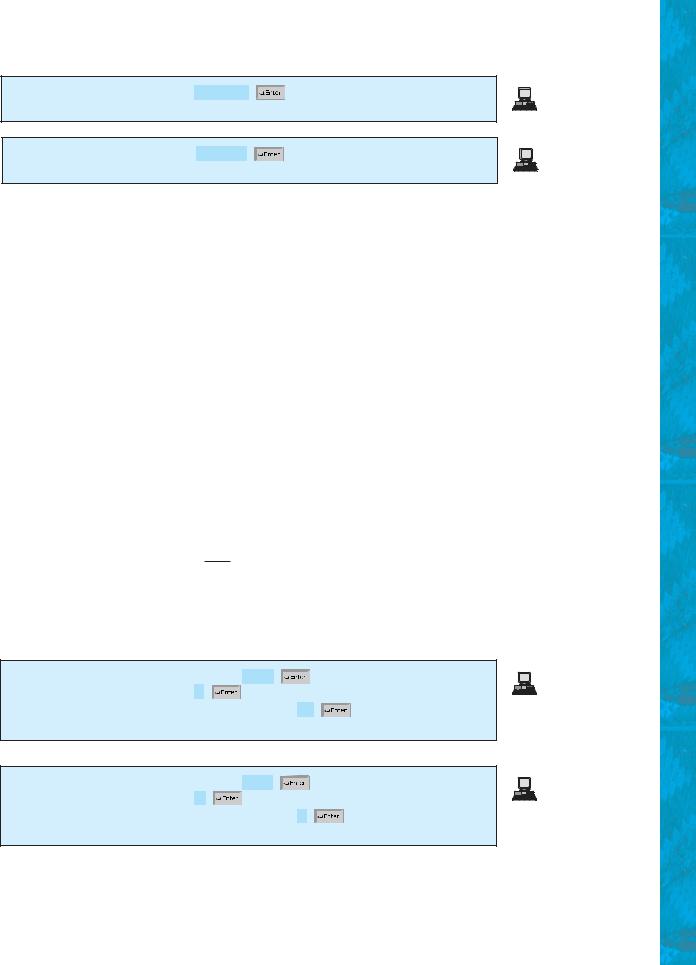
Programming Exercises 109
Enter three edges: 1 2.5 1
Can edges 1, 2.5, and 1 form a triangle? false
Enter three edges: 2.5 2 1
Can edges 2.5, 2, and 1 form a triangle? true
3.20* (Science: wind-chill temperature) Exercise 2.17 gives a formula to compute the wind-chill temperature. The formula is valid for temperature in the range between - 58°F and 41°F and wind speed greater than or equal to 2. Write a program that prompts the user to enter a temperature and a wind speed. The program displays the wind-chill temperature if the input is valid, otherwise displays a message indicating whether the temperature and/or wind speed is invalid.
Comprehensives
3.21** (Science: day of the week) Zeller’s congruence is an algorithm developed by Christian Zeller to calculate the day of the week. The formula is
|
261m + 12 |
|
|
|
k |
|
j |
||
h = aq + j |
|
k |
+ |
k + j |
|
k |
+ j |
|
k + 5jb % 7 |
10 |
4 |
4 |
|||||||
where
■h is the day of the week (0: Saturday, 1: Sunday, 2: Monday, 3: Tuesday, 4: Wednesday, 5: Thursday, 6: Friday).
■q is the day of the month.
■m is the month (3: March, 4: April, Á , 12: December). January and February are counted as months 13 and 14 of the previous year.
■j is the century (i.e., jyear k).
100
■ k is the year of the century (i.e., year % 7).
Write a program that prompts the user to enter a year, month, and day of the month, and displays the name of the day of the week. Here are some sample runs:
Enter year: (e.g., 2008): 2002
Enter month: 1-12: 3
Enter the day of the month: 1-31: 26
Day of the week is Tuesday
Enter year: (e.g., 2008): 2011
Enter month: 1-12: 5
Enter the day of the month: 1-31: 2
Day of the week is Thursday
(Hint: :n; = 1int2n for a positive n. January and February are counted as 13 and 14 in the formula. So you need to convert the user input 1 to 13 and 2 to 14 for the month and change the year to the previous year.)

110 Chapter 3 Selections
3.22** (Geometry: point in a circle?) Write a program that prompts the user to enter a point (x, y) and checks whether the point is within the circle centered at (0, 0) with radius 10. For example, (4, 5) is inside2 the circle and (9, 9) is outside the circle, as shown in Figure 3.7(a).
(Hint: A point is in the circle if its distance to (0, 0) is less than or equal to 10. The
formula for computing the distance is 1x2 - x122 + 1y2 - y122.) Two sample runs are shown below.)
y-axis |
|
|
(9, 9) |
|
y-axis |
|
|
|
|
|
|
|
|
||||||
|
|
|
|
|
|
|
|
|
|
|
|
(4, 5) |
|
|
|
|
|
(6, 4) |
|
|
|
|
|
|
|
(2, 2) |
|
||
|
|
|
|
|
|
|
|
|
|
|
|
|
|
|
|
|
|
|
|
|
|
(0, 0) |
x-axis |
|
|
|
(0, 0) |
x-axis |
|
|
|
|
|
|
|
|
|
|
|
|
|
|
|
|
|
|
|
|
|
(a) |
(b) |
FIGURE 3.7 (a) Points inside and outside of the circle; (b) Points inside and outside of the rectangle.
Enter a point with two coordinates: 4 5
Point (4.0, 5.0) is in the circle
Enter a point with two coordinates: 9 9
Point (9.0, 9.0) is not in the circle
3.23** (Geometry: point in a rectangle?) Write a program that prompts the user to enter a point (x, y) and checks whether the point is within the rectangle centered at (0, 0) with width 10 and height 5. For example, (2, 2) is inside the rectangle and (6, 4) is outside the circle, as shown in Figure 3.7(b).
(Hint: A point is in the rectangle if its horizontal distance to (0, 0) is less than or equal to 10 / 2 and its vertical distance to (0, 0) is less than or equal to 5 / 2.] Here are two sample runs. Two sample runs are shown below.)
Enter a point with two coordinates: 2 2
Point (2.0, 2.0) is in the rectangle
Enter a point with two coordinates: 6 4
Point (6.0, 4.0) is not in the rectangle
3.24** (Game: picking a card) Write a program that simulates picking a card from a deck of 52 cards. Your program should display the rank (Ace, 2, 3, 4, 5, 6, 7, 8,
9, 10, Jack, Queen, King) and suit (Clubs, Diamonds, Hearts, Spades) of the card. Here is a sample run of the program:
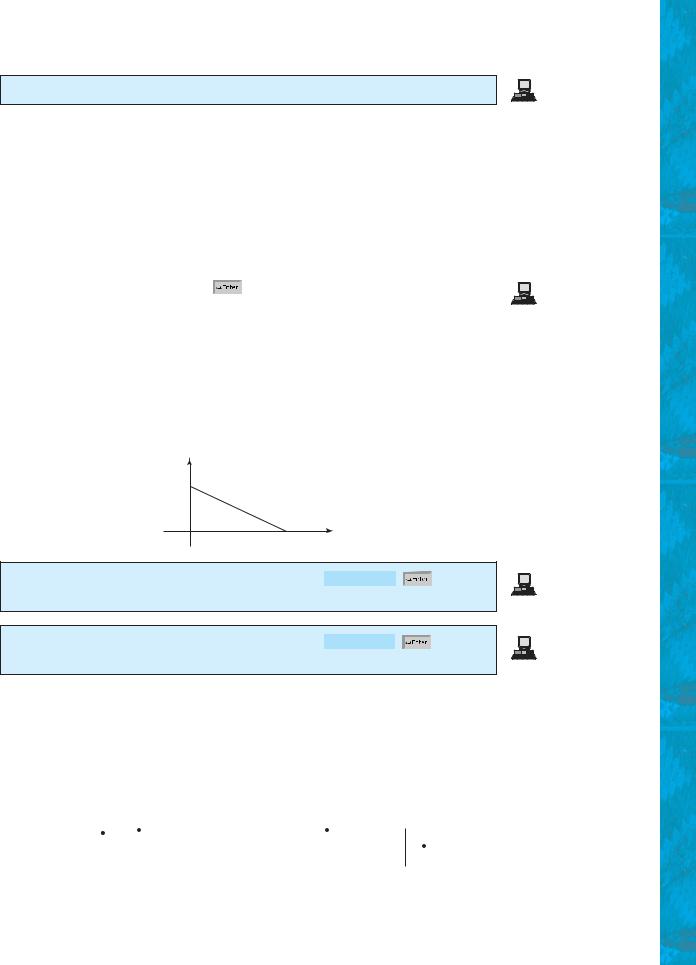
Programming Exercises 111
The card you picked is Jack of Hearts
3.25** (Computing the perimeter of a triangle) Write a program that reads three edges for a triangle and computes the perimeter if the input is valid. Otherwise, display that the input is invalid. The input is valid if the sum of any two edges is greater than the third edge.
3.26(Using the &&, || and ^ operators) Write a program that prompts the user to enter an integer and determines whether it is divisible by 5 and 6, whether it is divisible by 5 or 6, and whether it is divisible by 5 or 6, but not both. Here is a sample run of this program:
|
|
|
|
|
|
Enter |
an integer: |
10 |
|
|
|
Is 10 |
divisible by 5 |
and 6? false |
|||
Is |
10 |
divisible by |
5 |
or |
6? true |
Is |
10 |
divisible by |
5 |
or |
6, but not both? true |
|
|
|
|
|
|
3.27** (Geometry: points in triangle?) Suppose a right triangle is placed in a plane as shown below. The right-angle point is placed at (0, 0), and the other two points are placed at (200, 0), and (0, 100). Write a program that prompts the user to enter a point with x- and y-coordinates and determines whether the point is inside the triangle. Here are the sample runs:
(0, 100)
 p2
p2
 p1
p1
(0, 0) |
(200, 0) |
Enter a point’s x- and y-coordinates: 100.5 25.5
The point is in the triangle
Enter a point’s x- and y-coordinates: 100.5 50.5
The point is not in the triangle
3.28** (Geometry: two rectangles) Write a program that prompts the user to enter the center x-, y-coordinates, width, and height of two rectangles and determines whether the second rectangle is inside the first or overlaps with the first, as shown in Figure 3.8.
|
|
|
w1 |
|
w1 |
||
|
|
w2 |
|
|
|
|
|
h1 |
h2 |
(x2, y2) |
(x1, y1) |
h1 |
(x1, y1) |
|
w2 |
|
|
||||||
|
|
|
|
|
|
||
|
|
|
|
h2 |
|
|
|
|
|
|
|
|
|
||
|
|
|
|
|
|
|
(x2, y2) |
|
|
|
|
|
|
|
|
|
|
|
|
|
|
|
|
|
|
|
(a) |
|
(b) |
||
FIGURE 3.8 (a) A rectangle is inside another one. (b) A rectangle overlaps another one.
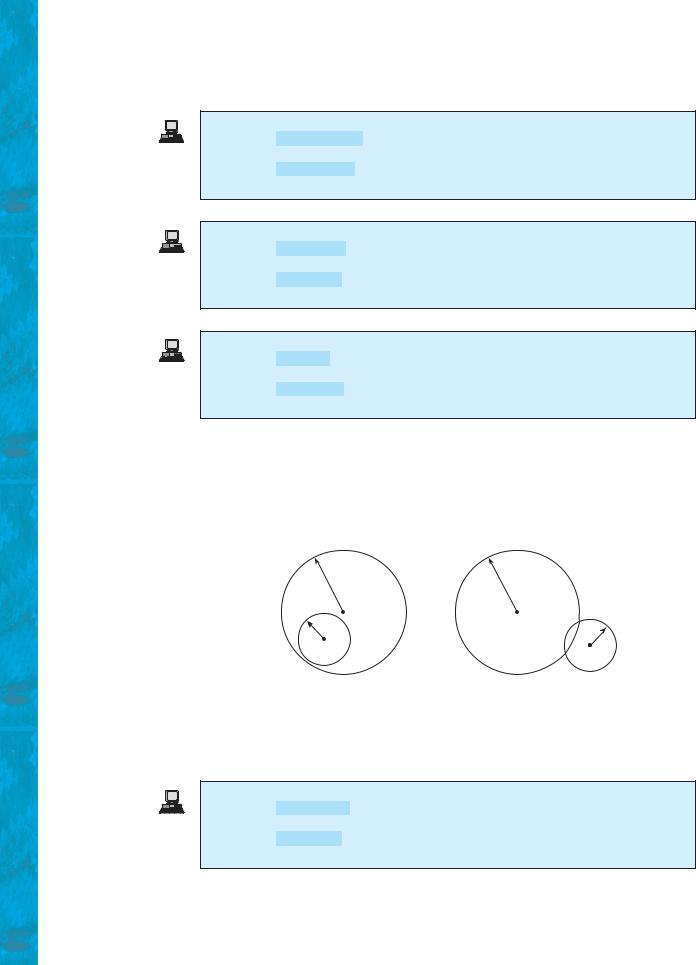
112 Chapter 3 Selections
Here are the sample runs:
Enter r1’s center x-, y-coordinates, width, and height: 2.5 4 2.5 43 
Enter r2’s center x-, y-coordinates, width, and height: 1.5 5 0.5 3 
r2 is inside r1
Enter r1’s center x-, y-coordinates, width, and height: 1 2 3 5.5 
Enter r2’s center x-, y-coordinates, width, and height: 3 4 4.5 5 
r2 overlaps r1
Enter r1’s center x-, y-coordinates, width, and height: 1 2 3 3 
Enter r2’s center x-, y-coordinates, width, and height: 40 45 3 2 
r2 does not overlap r1
3.29** (Geometry: two circles) Write a program that prompts the user to enter the center coordinates and radii of two circles and determines whether the second circle is inside the first or overlaps with the first, as shown in Figure 3.9.
(Hint: circle2 is inside circle1 if the distance between the two centers 6 = |r1 - r2| and circle2 overlaps circle1 if the distance between the two centers 6 = r1 + r2.)
r1 |
r1 |
(x1, y1) |
(x1, y1) |
r2 |
r2 |
|
|
(x2, y2) |
(x2, y2) |
|
|
(a) |
(b) |
FIGURE 3.9 (a) A circle is inside another circle. (b) A circle overlaps another circle.
Here are the sample runs:
Enter circle1’s center x-, y-coordinates, and radius: 0.5 5.1 13 
Enter circle2’s center x-, y-coordinates, and radius: 1 1.7 4.5 
circle2 is inside circle1
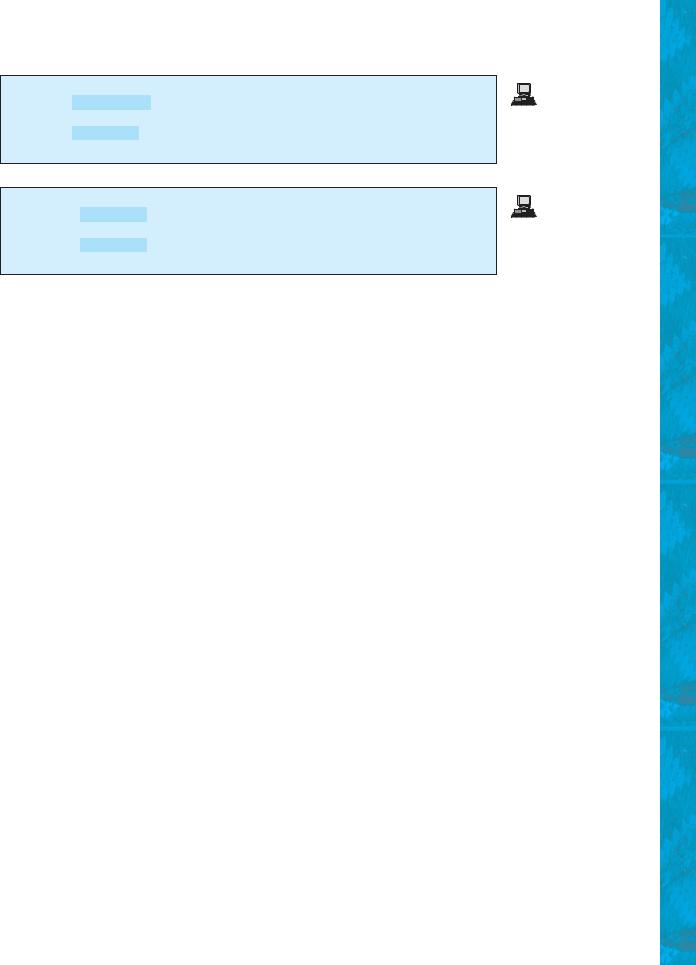
Programming Exercises 113
Enter circle1’s center x-, y-coordinates, and radius: 3.4 5.7 5.5 
Enter circle2’s center x-, y-coordinates, and radius: 6.7 3.5 3 
circle2 overlaps circle1
Enter circle1’s center x-, y-coordinates, and radius: 3.4 5.5 1 
Enter circle2’s center x-, y-coordinates, and radius: 5.5 7.2 1 
circle2 does not overlap circle1
This page intentionally left blank

CHAPTER 4
LOOPS
Objectives
■To write programs for executing statements repeatedly using a while loop (§4.2).
■To develop a program for GuessNumber (§4.2.1).
■To follow the loop design strategy to develop loops (§4.2.2).
■To develop a program for SubtractionQuizLoop (§4.2.3).
■To control a loop with a sentinel value (§4.2.4).
■To obtain large input from a file using input redirection rather than typing from the keyboard (§4.2.4).
■To write loops using do-while statements (§4.3).
■To write loops using for statements (§4.4).
■To discover the similarities and differences of three types of loop statements (§4.5).
■To write nested loops (§4.6).
■To learn the techniques for minimizing numerical errors (§4.7).
■To learn loops from a variety of examples (GCD,
FutureTuition, MonteCarloSimulation) (§4.8).
■To implement program control with break and continue (§4.9).
■(GUI) To control a loop with a confirmation dialog (§4.10).
